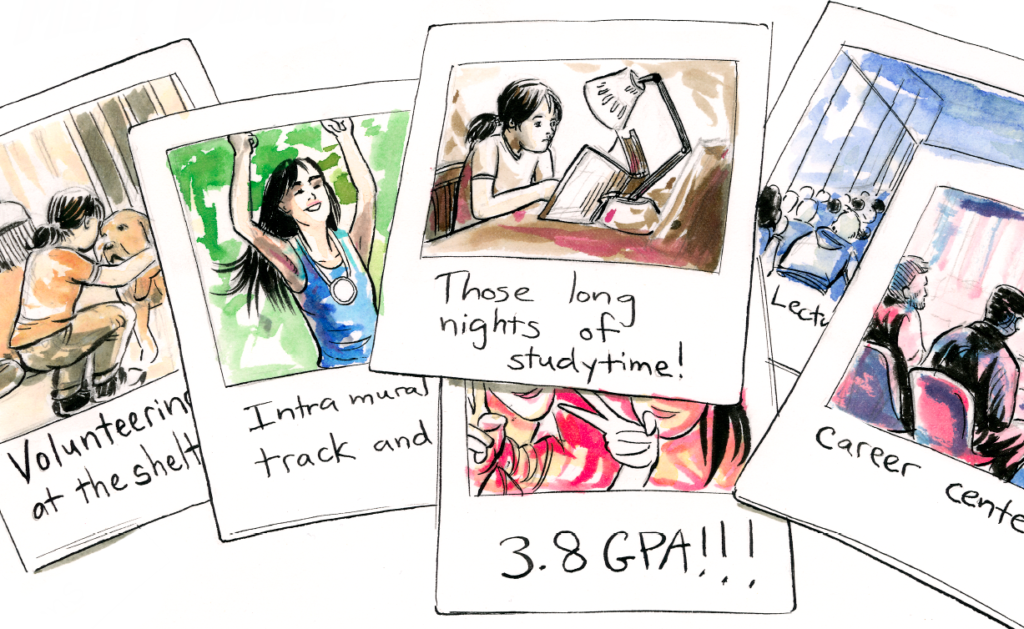The college admissions process has been changing rapidly and confusingly. This is especially true for the elite universities and liberal arts colleges ranked in the Top 100 nationwide.
The statistics for admissions to top colleges are just one side of the story. But there are many other, more subtle factors that have changed college admissions in recent years. Some of these changes have been predictable; others have not. But every change influences admission decisions, and it’s more important than ever to understand what exactly that means for you.
Admission decisions are opaque and increasingly subjective—yet this subjectivity isn’t necessarily a bad thing. In many ways, as admissions committees have searched for ways to distinguish between impressive candidates, the process has become more and more about interpersonal connection.
You can take advantage of this interpersonal connection if you sincerely want to do so. But knowing what steps to take in order to leave a lasting impression isn’t easy.
That’s why we are sharing our perspective on key changes to the college admissions process that you need to be aware of. If you understand these big-picture changes, you can bear them in mind while developing your strategy. And in this way, you will prepare yourself to submit your strongest, most compelling applications.
1. The first way in which college admissions has become more interpersonal has been the shift from quantitative to qualitative assessment in the process of holistic review. Elite colleges can no longer rely only on grades and test scores; they now seek to understand a student’s character, drive, engagement, impact, and dreams. This is even truer in the context of most colleges going test-optional or even test-blind.
2. This leads to change #2: the increased importance of personal storytelling. As selective colleges have developed more ways to learn about their applicants—none more important than the personal statement—the weight of these materials has increased. Different types of portfolios, more essays, and supplemental recommendations have all been added to the mix. More and more often, students who capture a distinctive spark using an authentic voice are the ones who receive offers.
3. That’s because of the third change, which is on the macro level. This is the growing general level of global education. Access to education and academic opportunities have increased, if unequally. More and more students have the academic qualifications to apply to elite US universities; more and more families have the financial means to afford them. Nonetheless, the universities’ enrollment numbers remain by and large static. In other words, there are far more qualified applicants than seats available. This is not a change in and of itself, but the degree to which it is true has changed drastically.

4. This bleeds into change #4, which is that the standards for extracurricular activities have continued to grow higher. Especially with the advent of the internet, young people are accomplishing increasingly impressive things (published research or writing, software apps, blogs, startups, nonprofits, inventions, etc.) at young ages. Unfortunately, under-resourced students are still significantly disadvantaged on this front, as on many others.
5. The fifth change has to do with the admissions scandals that rocked higher education over the last few years. They resulted in increased firewalls and division between admissions offices, faculty, and university administrators. In general, they also prompted increased transparency about admissions criteria and decision-making processes. Gone are the days when a well-placed letter of recommendation from an influential person could assure admittance to a top university. Gone are most practices regarding athletic ratings for non-athletes. The debate continues over how race and ethnicity should factor into decisions if they do so at all.
6. Change #6 is the tenuous balance colleges have struck in regards to diversity. They insist that they do not have quotas for students from certain backgrounds. But they also stress that they are looking to bring diverse perspectives to campus. In the end, students whose identities, geographies, or lived experiences break a college’s norms are increasingly favored. This also means that overall, legacy status is slowly losing ground as an admissions factor, though this varies significantly from college to college.
7. Finally, colleges are taking different stances on the value of demonstrated interest as they grow increasingly concerned with their yields. Some colleges factor demonstrated interest highly as an indicator of a student’s fit with their college and likeliness to attend. Others focus only on perceived cultural, social, and academic fit, and disregard demonstrated interest. This is one of the many ways in which data are increasingly influencing the admissions process. Less selective colleges have even automated parts of the process to sort out students who fall below certain thresholds.
Firstly, don’t be tempted to use any family connections to influence your admissions decision. This is now more likely to hurt your application than to help it. In the worst case, it can also show a lack of confidence in your own capabilities, and colleges may even report such behaviors to peer institutions.
Secondly, prioritize your personal fit above all else. Yes, you might hear this from a lot of people. But what exactly does it mean? Can’t both MIT and Stanford be your dream schools?
Yes, of course you can have multiple dream schools. But the truth is that out of the Top 20 universities, only around three are likely to really tick every one of your boxes. Whether you care more about personal preferences (like size or location), academics, or social life and campus culture,
Why does this make a difference? By focusing on a narrower set of reach colleges, you are practically guaranteed to learn more about each of your top choices, and thus, to submit much stronger applications to these colleges. Using the shotgun approach burns your most valuable resource—time—and forces you to submit applications that don’t match your potential.

Thirdly, focus on developing extracurricular activities that showcase your true passions, especially for intellectual pursuits. If you don’t know what those passions are, that’s OK. It’s normal to do exploration before committing to a single path. To help get started, check out our resources on how to plan extracurricular activities and career exploration for High School students.
The point of this is that the things you do outside of school are what will eventually tip the scales in your favor for admissions decisions. Admissions Officers are real, normal people. They want to get a sense of your actual character in order to know if you’d fit in the class they’re composing.
And arguably the best way to showcase this character—beyond your essays—is through your activities. Think beyond just research: start a blog or video channel, engage in thought leadership or online debate, contribute to an open source community, develop passion projects, submit artworks to exhibitions, seek to publish your opinions, and look for how you can get others just as excited about learning as you are.
You specifically want to find activities that connect in some way to your scholarly pursuits because these can reinforce your ability to follow through on your goals. Getting an external recommendation not from someone with a prestigious title, but someone who can speak to your practical impact, is a crucial bonus in proving that are you capable of accomplishing what you set out to accomplish.
Lastly, if you are really struggling to define your intellectual curiosity, consider it in one of two ways. Either pick a complex problem you want to solve, or a big question you want to answer. This problem or questions shouldn’t be so grand in scope as to be cliche or predictable: don’t say you want to solve global poverty. Often, the best ideas come from looking at issues in your own community, or just things that you naturally find yourself pondering in your downtime.
Teenagers usually go through college applications just once. Families may do so a handful of times. It would be crazy to expect every family to stay on top of all that’s changing in college admissions. That’s why more and more parents are seeking help to navigate the application process. Sometimes it’s worth bringing in an expert to take some stress and confusion off your plate.
If you’re curious about what exactly we do to help students and families, read more about our comprehensive College Admissions Consulting services, or schedule a conversation directly.